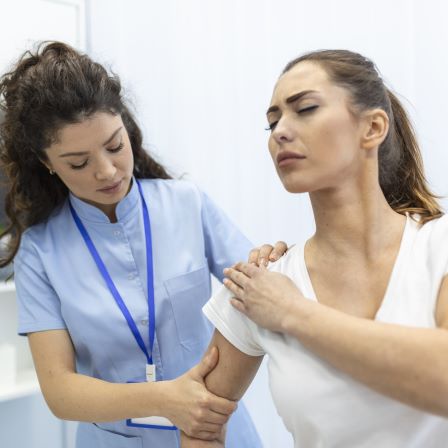The rotator cuff is a group of four essential muscles surrounding the shoulder joint that facilitates arm lifting and rotation. These muscles include the subscapularis, supraspinatus, infraspinatus, and teres minor, and they converge to form a tendon that attaches to the humerus bone. The rotator cuff tendons operate in a delicate balance to move and position the arm for everyday activities like brushing hair, feeding oneself, and reaching behind the back to undo a bra strap or above the head to hang washing. Moreover, they are critical in maintaining the head of the arm bone (humerus) centred and stable within the shoulder socket (glenoid). Neglecting a torn rotator cuff can result in a type of shoulder arthritis called rotator cuff arthropathy.

A tear in the rotator cuff can occur suddenly from a traumatic event or injury. In younger and middle-aged people, a rotator cuff tear may result from sports-related activities or work-related incidents that involve reaching out to catch oneself from falling. Additionally, it can occur when the shoulder is dislocated. With repetitive strain and overhead exercises, the rotator cuff tendons may become irritated and unhealthy, showing signs of tendinopathy or tendinitis. On a microscopic level, a diseased tendon has irregularly shaped and arranged collagen fibers, making it more prone to tearing over time.
As we age, the rotator cuff tendon can become thinner and degenerate, and bone spurs on the underside of the shoulder blade can cause abrasion of the tendon, leading to chronic tear.
A torn rotator cuff can result in the following symptoms:

Along with a thorough clinical examination that includes isolating and testing individual rotator cuff muscles, the following investigations are helpful in diagnosing a rotator cuff tear